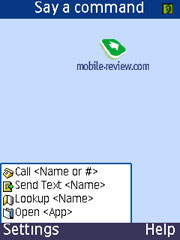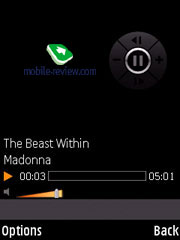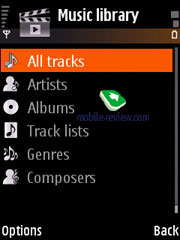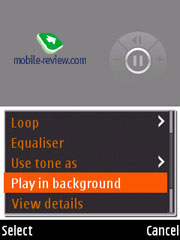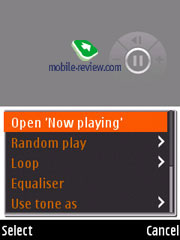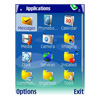|
|
Review of GSM/UMTS-smartphone Samsung i520
Sales package:
- Handset
- 950 mAh Li-Ion battery
- Charger
- Wired headset
- USB data cable
- User Guide
- microSD memory card (size varies by region, for the Russian market the card is missing)
Samsung hasn’t been presenting a great many of smartphones so far, as the company’s manager don’t really trust in such products. Nevertheless in the middle of 2006 they initiated development of a whole battery of models running different operating systems, but all of them are another just go, monitoring of the market to figure out whether it has already grown or not. At a glance this approach seems extremely wasteful, but since it will keep the engineers in shape, allow them to acquire some knowledge and skill in handling various operating systems, try out new solutions, it isn’t such a big waste at all. Also, don’t forget that the announced smartphones are here to stay and eventually make it to the market and generate some sales, rather than for the show’s sake. The example of Samsung D720 and Samsung D730 that very extremely late releases, is something to count with. When these two hit the market they were already hopelessly dated, the only special thing about them was the form-factor, which led to surprisingly high sale rate, as consumers picked it not for the filling, but the design. A good friend of mine was looking for a Samsung D720 before the New Year because of a very plain reason: she needed the looks, while the inners were secondary.
For the S60 world, where Nokia rules the roost, blazing fast launch of new products is essential, as otherwise against the backdrop of kaleidoscope of Nokia’s announcements of updates to its range, other makers won’t be able to obtain a cutting edge. That is why with the advent of Feature Pack 1 for S60 3rd edition a couple of companies intensified their efforts in this area and came up with new solutions. For Samsung the most consistent move was to go for a slider, as today it is on the top of the company’s priority list, thus Samsung i520 is housed in slider-style form-factor. Similar, yet LG-branded, slider is the KS10, formerly known as LG Joy.

What could Samsung bring into Feature Pack 1 platform, that doesn’t differ from product to product, and if it does, then these are pre-installed applications? Undoubtedly, the strongest sides of the handset are the hardware filling, design and slider-style form-factor. By the moment it makes it to local stores, the market will have seen release only of Nokia E65, based on pure 3rd edition, though having some stylistic appeal. The LG-branded device is due out at about the same time, yet in light of how this brand is perceived, it won’t be in great demand.


There have been many flattering reviews on Samsung i520 popping up on various forums, sometimes it is even dubbed as “the best S60-powered smartphone around”. But these are all emotions about a product that hasn’t been released yet, and the truth is, these emotions usually have nothing to do with the reality. The handset measures in at 101.7x50.5x17.9 mm and weights in at 99 grams, which makes it so like ordinary sliders in terms of dimensions, which is an obvious draw. But in general, today these devices are getting their cases shorn and slimmed down, just take a look at what happened with Nokia E65, Nokia N76. However for a UMTS-solution, while maybe not at the bottom line, the i520’s size is close to this mark, and thus looks very attractive in this sense, allowing you to throw it in just about any pocket or bag.



The handset comes equipped with spring-loaded mechanism, which works not as smooth as we’d like – the halves slide apart a tad too hard, which is in fact a big difference between the i520 and the rest of the company’s sliders. The lens of 2 Mpix camera is placed on the back of the sliding half.


The phone comes only in black and will hardly get any additional color solutions. On top of that the manufacturer keeps arming its solution with touch-keypads with persistence, it would be better off with in some other areas. The i520 follows in the footsteps of Samsung E900, meaning that its navigation key with OK in the centre is mechanical, though it’s flanked by touch-sensitive functional keys. In most cases these buttons do quite well and don’t bring about any hardships, yet in winter they just refuse to react on presses. Zipping the slider close automatically locks the keypad, although on incoming call you may keep the handset closed and answer it with OK button. A drawback we can’t just overlook is the fact that when handling the camera, you keep accidentally pressing the left soft-key, as you flick on the dedicated camera button on the spine, while your fingers rest on the opposite side of the casing. Ultimately, these touch-sensitive buttons is all another attempt to follow the fashion, rather that something truly vital.


The numeric keypad is quite conventional with all dimly backlit buttons. The keys are quite comfortable to use and don’t hurt the overall ergonomics of the phone. A thing you might find useful – the “0” key is assigned to the fast start up of the sound recorder.


The display is a strong side of the handset, as it sports a resolution of 240x320 pixels (2.3 inches, 35x46 mm), and shows up to 262 K colors (TFT). The picture output by the display is bright and crisp, and even though it gets washed out in the sun, information remains legible. Display-wise the i520 proves to be one of its class’s best offerings, and naturally we have absolutely no gripes with it. The screen accommodates up to 8 text and 3 service lines written in adequately-sized font.
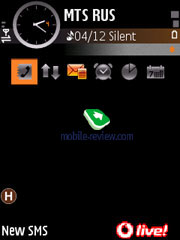
Topping the display is the forward-facing camera for making video calls. The left-hand side houses volume rocker and dedicated music player button, while looking at the top reveals the holes for a carrying strap. The right spine plays host to the power button, camera shortcut key and microSD memory expansion slot, covered by a rubber flap, which is linked up with the casing. Further down is the socket for plugging in charger or headset.


Turning the phone around you will see the place where the speaker sits and the battery, which is in fact a part of the rear plate. The i520 utilizes a 950 mAh Li-Ion battery, and as the maker claims it can keep the handset up and running for 3.5 hours and 145 hours (for calls and standby respectively). In conditions of Moscow networks the handset lasted about 2 days on average load (45 minutes of calls, up to 2 hours of music playback). It takes the battery about 2,5-3 hours to charge from empty to full.


Menu and highlights of the handset
Article on standard OS functions you can find here >>>
Updates delivered by Feature Pack 1 are reviewed here >>>
Comprehensive review of the browser>>>
Samsung i520v is identical to the original version of the handset, yet meant for Vodafone network and thus sports altered menu design. We thought it would be interesting to play around with this very edition of the phone, thankfully it doesn’t differ from Nokia’s solutions. In fact, Samsung i520 is the first device to have been equipped with a carrier’s customized interface. It will be followed up by Vodafone-tailored Nokia N95 shortly.
Unlike ordinary handsets, where domination of white and red colors is too obtrusive, in the i520 we finally have a change to take a break and make use of noble black-and-orange design. It bears certain resemblance to the interface Samsung applies in its Ultra range (black with white) and believed by Samsung to be the identifier of a premium product.
The carrier-branded device boasts the following highlights: scrolling text at standby screen, ability to subscribe to various news feeds, while to the original edition this capability is locked out. It’s remarkable that nearly the same RSS subscription is included into Feature Pack 2.
Everyone knows that menu layout and categorization of features by menu items is modified by each manufacturer himself, and the i520 isn’t the finest example of that, as it seems to be not very logical, and makes even less sense than other S60-based devices. “My Applications” section, for some reason got assigned as a sub-item in “Organizer”, along with the browser and Flash player. Why none of the market gets categorization issue handled – I can’t figure this out.
Hardware-wise the model is notable for being powered by ARM11 CPU running at 355 MHz, which is characteristic to the latest-gen devices, rather than those of the previous wave. The hardware filling the handset comes with is Qualcomm MSM6275, chips TI OMAP 2430 (support for hardware 3D accelerator, though it is not employed in this model). There is 50 Mb of user-manageable memory in the i520, not counting micorSD memory expansion slot. MemMon utility indicates that there is 47936 Mb of RAM available.
Bluetooth. Bluetooth version found in this smartphone - 2.0 with EDR support. The handset deals with the following profiles:
- BIP-ImagePush;
- DUN-GW;
- FT-Server;
- HandsFree-AG (1.0);
- Headset-AG;
- OBEX;
- OPP-Client;
- OPP-Server;
- SIM Access-Server.
Regrettably, no A2DP support, in other words ability to transfer stereo-sound to a headset, is built into the i520. While the manufacturer mentioned this capability before, its implementation into the platform itself has brought about certain hardships. Maybe later on, along with Nokia N76, this device will finally obtain support for this profile.
USB. On connection you can select either USB Mass Storage or PC Suite mode. USB version – 2.0. While operating USB Mass Storage, the i520 puts up data transfer speed of about 600-800 Kb/s. Once you have plugged in the cable, the phone automatically starts charging up.
Picsel Browser. As a replacement for Quick Office over at Samsung they decided to arm their handset with Picsel Browser, which is familiar to those who have had a chance of playing with the company’s phones. This application enables you only to view office documents, pdf-files, images and so on. The current version features Bookmarks and History window with visual navigation (thumbnails of documents displayed on the screen) supported in both cases.
One of the foremost shortcomings is the fact that with the S60 the users have used not only to view, but edit documents as well. Although, you are free to install Quick Office on this device, but that’s another matter since it is not free of charge. And why they have picked Picsel Browser – it’s obvious, since it is cheaper for the manufacturer to build in an own application rather than acquire a license to get it on a relatively small number of units of one particular model.
Converter. Within Organizer menu you can find a converter working for various measurements.
Camera. The handset comes equipped with a 2 Mpix CMOS camera that takes decent shots in daylight in good light conditions, while snaps made indoors feature a lot of noises and striking artifacts.
In settings you can pick one of the following resolutions – 1600x1200, 1152x864, 800x600, 640x480 and 320x240 pixels. Picture quality is also adjustable – High, Normal, Basic – as well as shooting mode: still image, multi-shot, self-timer (10, 20 or 30 seconds) and night mode. The white balance settings are also available – Sunny, Incandescent, Fluorescent. When it comes to color settings, these are quite standard sorts of overlays – Sepia, Black&White, Negative.
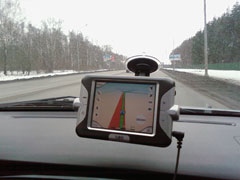 |
_2-low.jpg) |
(+)
maximize, 1600x1200, JPEG |
(+)
maximize, 1600x1200, JPEG |
_2-low.jpg) |
_2-low.jpg) |
(+)
maximize, 1600x1200, JPEG |
(+)
maximize, 1600x1200, JPEG |
_2-low.jpg) |
_2-low.jpg) |
(+)
maximize, 1600x1200, JPEG |
(+)
maximize, 1600x1200, JPEG |
_2-low.jpg) |
_2-low.jpg) |
(+)
maximize, 1600x1200, JPEG |
(+)
maximize, 1600x1200, JPEG |
_2-low.jpg) |
_2-low.jpg) |
(+)
maximize, 1600x1200, JPEG |
(+)
maximize, 1600x1200, JPEG |
The handset captures video with pretty good quality at 352x288, 176x144 pixels and 15 FPS in MP4 format. You are enabled to turn off sound and record any clips duration-wise, unless the MMS mode is on.
Video sample (mp4, 2.2 Mb)>>>
Performance. Comparing the handset with Nokia 6290, we found out that it is falls only marginally short of the Nokia’s offspring. Overall, the i520 puts up typical figures for recent S60-powered solutions in terms of interface and applications speed.
| Jbenchmark 1 Nokia 6290 |
Jbenchmark 1 Samsung i520v |
| Date |
12/17/06 |
| Model name |
Nokia 6290 |
| Firmware version |
pc3.92b |
|
|
| Jbenchmark 1 |
1.1.1 |
|
|
| Version |
|
|
|
| Total Score: |
6027 |
|
|
| Details: |
|
| Text |
1782 |
| 2D Shapes |
1497 |
| 3D Shapes |
704 |
| Fill Rate |
329 |
| Animation |
1715 |
|
|
| Screen Width |
240 |
| Screen Height |
235 |
| Color Screen |
true |
| Number of Colors |
16777216 |
| Double Buffer |
true |
| Total Memory |
424960 |
| Free Memory |
123896 |
|
|
| MicroEdition Configuration |
CLDC-1.1 |
| MicroEdition Profiles: |
MIDP-2.0 |
| Microedition Platform: |
06w46.1 |
| Microedition Encoding: |
ISO-8859-1 |
| Microedition Locale |
en |
|
| Date |
12/24/06 |
| Model name |
Samsung i520v |
| Firmware version |
|
|
|
| Jbenchmark 1 |
1.1.1 |
|
|
| Version |
|
|
|
| Total Score: |
4466 |
|
|
| Details: |
|
| Text |
1259 |
| 2D Shapes |
1075 |
| 3D Shapes |
520 |
| Fill Rate |
338 |
| Animation |
1274 |
|
|
| Screen Width |
240 |
| Screen Height |
235 |
| Color Screen |
true |
| Number of Colors |
65536 |
| Double Buffer |
true |
| Total Memory |
424960 |
| Free Memory |
103908 |
|
|
| MicroEdition Configuration |
CLDC-1.1 |
| MicroEdition Profiles: |
20bufj3 |
| Microedition Platform: |
06w46.1 |
| Microedition Encoding: |
ISO-8859-1 |
| Microedition Locale |
en |
|
| Jbenchmark 2 Nokia 6290 |
Jbenchmark 2 Samsung i520v |
| Version |
2.1.1 |
|
|
| Total Score: |
617 |
|
|
| Details: |
|
| Image Manipulation |
397 |
| Text |
741 |
| Sprites |
572 |
| 3D Transform |
954 |
| User Interface |
555 |
|
|
| Screen (canvas) Width |
240 |
| Screen (canvas) Height |
235 |
| Color Screen |
true |
| Number of Colors |
16777216 |
| JPEG Support |
true |
| Transparency (Alpha Level) |
256 |
| Double Buffer |
true |
| Total Memory |
637952 |
| Free Memory |
124720 |
|
|
| MicroEdition Configuration |
CLDC-1.1 |
| MicroEdition Profiles: |
MIDP 2.0 |
| Microedition Platform: |
06w46.1 |
| Microedition Encoding: |
ISO-8859-1 |
| Microedition Locale |
en |
|
| Version |
2.1.1 |
|
|
| Total Score: |
489 |
|
|
| Details: |
|
| Image Manipulation |
394 |
| Text |
537 |
| Sprites |
517 |
| 3D Transform |
838 |
| User Interface |
304 |
|
|
| Screen (canvas) Width |
240 |
| Screen (canvas) Height |
235 |
| Color Screen |
true |
| Number of Colors |
65536 |
| JPEG Support |
true |
| Transparency (Alpha Level) |
256 |
| Double Buffer |
true |
| Total Memory |
478720 |
| Free Memory |
9176 |
|
|
| MicroEdition Configuration |
CLDC-1.1 |
| MicroEdition Profiles: |
MIDP 2.0 |
| Microedition Platform: |
20bufj3 |
| Microedition Encoding: |
ISO-8859-1 |
| Microedition Locale |
en |
|
| Jbenchmark 3D Nokia 6290 |
Jbenchmark 3D Samsung i520v |
| Perfomance |
|
| Jbenchmark3D HQ: |
192 |
| Jbenchmark3D LQ: |
396 |
| Triangles ps: |
53139 |
| kTexes ps: |
3544 |
|
|
| version: |
3.1.0 |
|
|
| Screen(canvas)width: |
240 |
| Screen(canvas)height: |
320 |
|
|
| 3D Subsystem: |
|
| M3G Version: |
1.1 |
| Antialaising: |
false |
| True color: |
false |
| Dithering: |
false |
| Mipmapping: |
true |
| Perspective correction: |
true |
| Local camera lighting: |
false |
| Max lights: |
8 |
| Max Viewport dimensions: |
1024 |
| Max Texture Dimensions: |
1024 |
| Max Sprite Crop Dimensions: |
1024 |
| Max Transforms Per Vertex: |
4 |
| Number of Texture Units: |
2 |
|
|
| Other properties |
|
| Color Screen |
true |
| Number of colors |
16777216 |
| Transparency (alpha level) |
256 |
| Double buffer |
true |
| Total memory: |
424960 |
| Free memory: |
79716 |
|
|
| MicroEdition Configuration |
CLDC-1.1 |
| MicroEdition Profiles: |
MIDP 2.0 |
| Microedition Platform: |
06w46.1 |
| Microedition Encoding: |
ISO-8859-1 |
| Microedition Locale |
en |
| Microedition Communication ports: |
USB0, COM0, IR0, BT0-BT63 |
| Microedition Hostname: |
localhost |
|
| Perfomance |
|
| Jbenchmark3D HQ: |
182 |
| Jbenchmark3D LQ: |
353 |
| Triangles ps: |
51264 |
| kTexes ps: |
3301 |
|
|
| version: |
3.1.0 |
|
|
| Screen(canvas)width: |
240 |
| Screen(canvas)height: |
320 |
|
|
| 3D Subsystem: |
|
| M3G Version: |
1.1 |
| Antialaising: |
false |
| True color: |
false |
| Dithering: |
false |
| Mipmapping: |
true |
| Perspective correction: |
true |
| Local camera lighting: |
false |
| Max lights: |
8 |
| Max Viewport dimensions: |
1024 |
| Max Texture Dimensions: |
1024 |
| Max Sprite Crop Dimensions: |
1024 |
| Max Transforms Per Vertex: |
4 |
| Number of Texture Units: |
2 |
|
|
| Other properties |
|
| Color Screen |
true |
| Number of colors |
65536 |
| Transparency (alpha level) |
256 |
| Double buffer |
true |
| Total memory: |
424960 |
| Free memory: |
2880 |
|
|
| MicroEdition Configuration |
CLDC-1.1 |
| MicroEdition Profiles: |
MIDP 2.0 |
| Microedition Platform: |
20bufj3 |
| Microedition Encoding: |
ISO-8859-1 |
| Microedition Locale |
en |
| Microedition Communication ports: |
USB0, COM0, IR0, BT0-BT63 |
| Microedition Hostname: |
localhost |
|
| Jbenchmark HD Nokia 6290 |
Jbenchmark HD Samsung i520v |
| Version |
4.0.3 |
|
|
| Rendering Quality |
|
| Bilinear filtering: |
99% |
| Trilinear Filtering: |
Failrule (80%) |
| Perspective correction: |
Failrule (85%) |
| Z-buffer depth: |
14 bit or higher |
|
|
| Perfomance |
|
| Smooth triangles: |
66455 |
| Textured triangles: |
54584 |
| Fill rate: |
1623 kTexels |
| Gaming: |
115 (3.8 fps) |
|
|
|
|
| 3D Subsystem: |
|
| M3G Version: |
1.1 |
| Antialaising: |
false |
| True color: |
false |
| Dithering: |
false |
| Mipmapping: |
true |
| Perspective correction: |
true |
| Local camera lighting: |
false |
| Max lights: |
8 |
| Max Viewport dimensions: |
1024 |
| Max Texture Dimensions: |
256 |
| Max Sprite Crop Dimensions: |
1024 |
| Max Transforms Per Vertex: |
4 |
| Number of Texture Units: |
2 |
|
|
| Other properties |
|
| Microedition Platform: |
pc3.92b |
| Number of colors |
16777216 |
| Transparency (alpha level) |
256 |
| Double buffer |
true |
|
|
|
|
|
|
| MicroEdition Configuration |
CLDC-1.1 |
| MicroEdition Profiles: |
MIDP 2.0 |
| CLDC (JSR 30, 139) |
1.1 |
| Encoding: |
ISO-8859-1 |
| Locale |
ru-RU |
| Total memory: |
2097152 |
| Free memory: |
1074660 |
| MIDP (JSR 37, 118, 271) |
2 |
| Form width: |
222 |
| Form height: |
246 |
| Canvas Width: |
240 |
| Canvas Height: |
248 |
| Fullcanvas Width: |
240 |
| Fullcanvas Height: |
320 |
| Canvas doublebuffered: |
true |
| Color: |
true |
| Colors: |
16777216 |
| Alpha levels: |
256 |
|
|
| FC (JSR 75) |
1 |
| PIM (JSR 75) |
1 |
|
|
| Bluetooth (JSR 82) |
1 |
| Connected inquiry: |
true |
| Connected inquiry scan: |
true |
| Connected page: |
true |
| Connected page scan: |
true |
| Master switch: |
false |
| Connected inquiry scan: |
true |
|
|
| OBEX (JSR 82) |
|
| WMA (JSR 120, 205) |
2 |
| Smsc |
N/A |
|
|
| MMAPI (JSR 135) |
1.1 |
| Snapshots encodings: |
encoding=jpeg |
| Video capture: |
true |
| Video encodings: |
encoding=3gp |
| Streamable contents: |
none |
| Mixing: |
false |
| Recording: |
true |
| Audio encodings: |
amr, amr-nb |
| Audio capture: |
true |
|
|
| Web Parser (JSR 172): |
1 |
| WEB RPC (JSR 172): |
no |
| SATSA (JSR 177): |
1.0 |
| Location (JSR 179) |
no |
| SIP (JSR 180): |
no |
|
|
| JTWI (JSR 185) |
1 |
| CHAPI (JSR 211): |
no |
| SVG (JSR 226): |
1 |
| AMMS (JSR 234): |
1 |
| Global (JSR 234): |
no |
|
| Version |
4.0.3 |
|
|
| Rendering Quality |
|
| Bilinear filtering: |
100% |
| Trilinear Filtering: |
Failrule (80%) |
| Perspective correction: |
Failrule (85%) |
| Z-buffer depth: |
14 bit or higher |
|
|
| Perfomance |
|
| Smooth triangles: |
90506 |
| Textured triangles: |
72020 |
| Fill rate: |
2058 kTexels |
| Gaming: |
138 (4.6 fps) |
|
|
|
|
| 3D Subsystem: |
|
| M3G Version: |
1.1 |
| Antialaising: |
false |
| True color: |
false |
| Dithering: |
false |
| Mipmapping: |
true |
| Perspective correction: |
true |
| Local camera lighting: |
false |
| Max lights: |
8 |
| Max Viewport dimensions: |
1024 |
| Max Texture Dimensions: |
1024 |
| Max Sprite Crop Dimensions: |
1024 |
| Max Transforms Per Vertex: |
4 |
| Number of Texture Units: |
2 |
|
|
| Other properties |
|
| Microedition Platform: |
pc3.92b |
| Number of colors |
16777216 |
| Transparency (alpha level) |
256 |
| Double buffer |
true |
|
|
|
|
|
|
| MicroEdition Configuration |
CLDC-1.1 |
| MicroEdition Profiles: |
MIDP 2.0 |
| CLDC (JSR 30, 139) |
1.1 |
| Encoding: |
ISO-8859-1 |
| Locale |
ru-RU |
| Total memory: |
996608 |
| Free memory: |
141908 |
| MIDP (JSR 37, 118, 271) |
2 |
| Form width: |
231 |
| Form height: |
234 |
| Canvas Width: |
240 |
| Canvas Height: |
235 |
| Fullcanvas Width: |
240 |
| Fullcanvas Height: |
320 |
| Canvas doublebuffered: |
true |
| Color: |
true |
| Colors: |
65536 |
| Alpha levels: |
256 |
|
|
| FC (JSR 75) |
1 |
| PIM (JSR 75) |
1 |
|
|
| Bluetooth (JSR 82) |
1 |
| Connected inquiry: |
false |
| Connected inquiry scan: |
false |
| Connected page: |
false |
| Connected page scan: |
false |
| Master switch: |
false |
| Connected inquiry scan: |
false |
|
|
| OBEX (JSR 82) |
|
| WMA (JSR 120, 205) |
2 |
| Smsc |
N/A |
|
|
| MMAPI (JSR 135) |
1.1 |
| Snapshots encodings: |
encoding=jpeg, png |
| Video capture: |
true |
| Video encodings: |
encoding=3gp, mp4 |
| Streamable contents: |
none |
| Mixing: |
true |
| Recording: |
true |
| Audio encodings: |
amr, amr-nb, pcm, mp4, au, x-au, x-wav |
| Audio capture: |
true |
|
|
| Web Parser (JSR 172): |
1 |
| WEB RPC (JSR 172): |
1 |
| SATSA (JSR 177): |
1.0 |
| Location (JSR 179) |
1 |
| SIP (JSR 180): |
1.0.1 |
|
|
| JTWI (JSR 185) |
1 |
| CHAPI (JSR 211): |
1 |
| SVG (JSR 226): |
1 |
| AMMS (JSR 234): |
1 |
| Global (JSR 234): |
no |
|
Voice commands. Another substantial difference setting the i520 and Nokia’s products apart, as the phone utilizes Voice Signal (version 2.1) software, that provides comparable functionality, for example dialing phone numbers from the phonebook without having to train the handset with voice tags, dialing numerals or call up particular menu items. To engage the system you just need to tap and hold the Send key. Though, the inability to turn text into speech (TTS technology) lets the i520 down, since this capability is implemented into most Nokia-branded products. Also, unlike Nokia, with Samsung i520 you can’t modify voice of the prompter.
On the other hand the Voice Signal kit ensures more properly identified voice commands, works faster and leaves an overall favorable impression.
Music player is the same we have used to see built-in in the S60, yet with slightly changed interface. One of its drawbacks is missing support for Album Arts. But for a non-music-heavy solution the player is pretty competent with sound quality typical for S60 platform (unquestionably loses to Nokia N91, but is in line with Nokia 3250).
Impressions
The reception quality with the i520 was never an issue – voice clarity on both ends was quite good. The volume of polyphonic ring tones is pretty high, though if you are into mp3 call alerts, then quality of polyphony takes on a secondary role. The silent alert is below-average strength-wise, thus you might end up not feeling it sometimes.
Unquestionably, this handset has turned out to be interesting, and its differences from standard solutions in the form of Nokia-labeled devices make some sense as well. These include ability to charge over USB on connection with PC, shapechanged interface (which can be rolled back with a respective theme, but the fact is), tidy video recording quality and still images taken in daylight. For 3G-enabled networks support for HSDPA will also come in handy. Speaking of its letdowns, we should list the touch-sensitive keypad that is not always welcome, everything but a standard audio jack and middling quality of bundled headset.
This model is by no means a revolution and rather is a well-made quality product. In the end of April – beginning of March it will make it to retail stores at a price of about 480-500 USD. By then this price bracket will have already seen release only of Nokia 6290 flip phone. Nevertheless these two solutions shouldn’t be faced off due to different form-factor, a big greater prowess of the6290 in the music department (also the adapter, which is more affordable, while the quality of player and sound is the same). Samsung’s trumps are the camera, Picsel Browser (while Quick Office can be installed as a third-party application, this one can’t be), good voice recognition system. Again, in my opinion there is no place for comparison of these two products – the physical differences are substantial, and on top of that their audiences don’t overlap. If oyu are into sliders and it is the time when you are looking for a S60-powered smartphone, then the i520 gets to be fetching. Otherwise it is nothing but a niche-aimed solution that won’t be the market’s best selling offering.

Related links:
Eldar Murtazin (eldar@mobile-review.com)
Translated by Oleg Kononosov (oleg.kononosov@mobile-review.com)
Published — 16 March 2007
Have something to add?! Write us... eldar@mobile-review.com
|
News:
[ 31-07 16:21 ]Sir Jony Ive: Apple Isn't In It For The Money
[ 31-07 13:34 ]Video: Nokia Designer Interviews
[ 31-07 13:10 ]RIM To Layoff 3,000 More Employees
[ 30-07 20:59 ]Video: iPhone 5 Housing Shown Off
[ 30-07 19:12 ]Android Fortunes Decline In U.S.
[ 25-07 16:18 ]Why Apple Is Suing Samsung?
[ 25-07 15:53 ]A Few Choice Quotes About Apple ... By Samsung
[ 23-07 20:25 ]Russian iOS Hacker Calls It A Day
[ 23-07 17:40 ]Video: It's Still Not Out, But Galaxy Note 10.1 Gets An Ad
[ 19-07 19:10 ]Another Loss For Nokia: $1 Billion Down In Q2
[ 19-07 17:22 ]British Judge Orders Apple To Run Ads Saying Samsung Did Not Copy Them
[ 19-07 16:57 ]iPhone 5 To Feature Nano-SIM Cards
[ 18-07 14:20 ]What The iPad Could Have Looked Like ...
[ 18-07 13:25 ]App Store Hack Is Still Going Strong Despite Apple's Best Efforts
[ 13-07 12:34 ]Infographic: The (Hypothetical) Sale Of RIM
[ 13-07 11:10 ]Video: iPhone Hacker Makes In-App Purchases Free
[ 12-07 19:50 ]iPhone 5 Images Leak Again
[ 12-07 17:51 ]Android Takes 50%+ Of U.S. And Europe
[ 11-07 16:02 ]Apple Involved In 60% Of Patent Suits
[ 11-07 13:14 ]Video: Kindle Fire Gets A Jelly Bean
Subscribe
|

















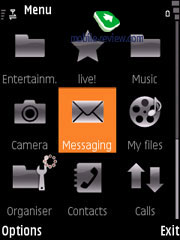
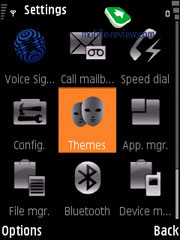
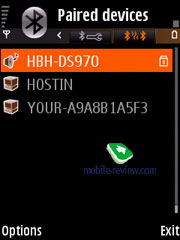
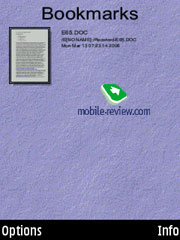
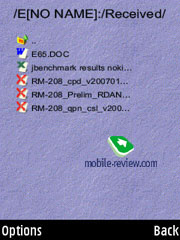
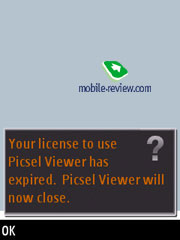
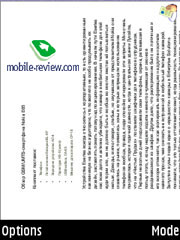
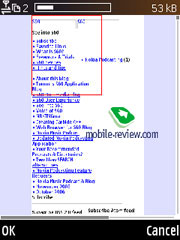
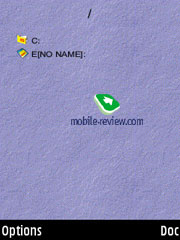


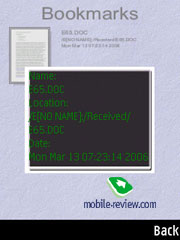
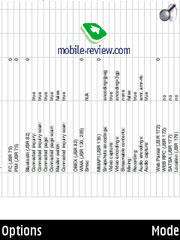
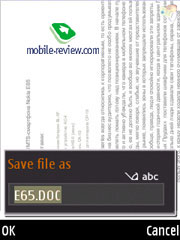
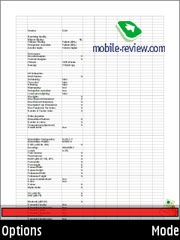
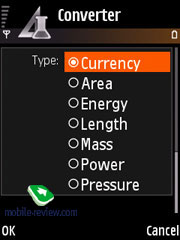

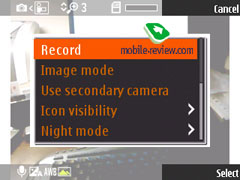

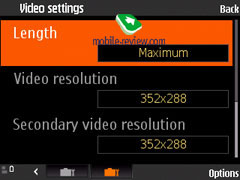



_2-low.jpg)
_2-low.jpg)
_2-low.jpg)
_2-low.jpg)
_2-low.jpg)
_2-low.jpg)
_2-low.jpg)
_2-low.jpg)
_2-low.jpg)
